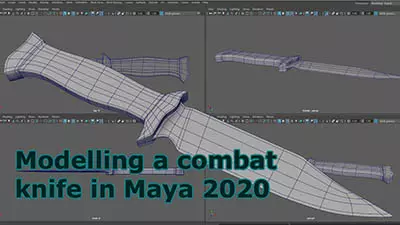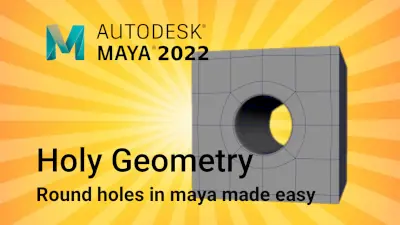Introduction to Maya - Rendering in Arnold
This course will look at the fundamentals of rendering in Arnold. We'll go through the different light types available, cameras, shaders, Arnold's render settings and finally how to split an image into render passes (AOV's), before we then reassemble it i
#
1
09-09-2008
, 03:27 PM
Registered User
Join Date: Mar 2008
Join Date: Mar 2008
Location: L.A.
Posts: 4
Cubic Map Creation: Shader, Script, Workflow
Two Mental Ray lens shaders that I've located both do the job wonderfully: Mentalray Lens Library (https://www.atomlabs.org/asdn/mentalr...ensl_index.htm) and Lightengine3D Aperture (https://www.lightengine3d.com/index2.html), but I have two 'damned if I do, damned if I don't' problems.
Both shaders are strictly 32 bit Maya compatible only and I don't have the knowledge, nor the access to source files in order to recompile either for 64-bit processing, which our primary render machine runs - 64bit Vista with Maya 2008 64bit. Despite attempts to install .net framework, etc.. etc.. I continually get errors upon render.
Secondly, we have a secondary 32 bit render machine with 32 bit Maya 2008 that has no issues with the plug-ins, but the meshes we're using are high-poly count files that cause Maya to simply run out of memory on Windows XP (32 bit), halting our process entirely once more.
I'm stumped. I really LOVE the idea of a one-touch cubemap render to get the source images for our pano's, but aside from manually placing camera rotations at 6 keyframes and making the attempt to stitch, tweak and blend the images so that seams aren't formed, I'm not sure where to turn.
Open to any and all help. Thanks!
#
2
09-09-2008
, 05:30 PM
I think I get what your after, converting a 3d scene into a cube map?
Off the top of my head could you not use something like HDR shop to do it?
That converts spherical, panoramic and cube maps maps such as HDR images into cube maps (or spherical or panoramics) pertty much in the touch of a button? You just need an input image to do it.
What you might have to do is have your environment make a sphere, up the reflectivity to 1 and just render the sphere, nothing else but make sure that everything is lighting/reflecting the sphere but its primary visibility is set to off, then use HDR shop to convert it?
It might be worth getting HDR shop (its free) and some spherical or panoramic HDR (or LDR dosent really matter for a test) images (free also from the same site if I remember correctly) and then seeing if HDR shop does what you want, as I might have got it wrong with what your after.
Hope its of some help.
Cheers
Steve
"No pressure, no diamonds" Thomas Carlyle
#
3
10-09-2008
, 02:09 AM
Registered User
Join Date: Mar 2008
Join Date: Mar 2008
Location: L.A.
Posts: 4
In the cubemap tools, you'll see what I'm trying to output. 6 distinct images that represent front, right, left, up, down and back. If mapped onto a cube from the inside (which is essentially what the flash element I spoke of earlier does) it gives the effect of being inside an environment and the camera can be rotated in any direction seamlessly as if you were sitting in the environment and twisting your head in whatever direction.
Both shaders I mentioned produce this 'cross' image without having the need for a complicated camera array or requiring me to reposition the camera, which I wouldn't mind doing necessarily, but have been unsuccessful at matching angles. Like I mentioned though, both shaders are 32 bit only.
#
4
10-09-2008
, 03:54 AM
"No pressure, no diamonds" Thomas Carlyle
#
5
10-09-2008
, 03:57 AM
Have a look and go to tutorials and then Panoramic Image Transformations
"No pressure, no diamonds" Thomas Carlyle
#
6
10-09-2008
, 04:22 AM
Registered User
Join Date: Mar 2008
Join Date: Mar 2008
Location: L.A.
Posts: 4
To my knowledge, there are no native shaders/camera settings to create the type of image I'd need to have HDRshop do the conversion. Does that make sense?
#
7
10-09-2008
, 04:38 AM
The best way round I could see would be to render off one image (like a sphere) and convert that, then you dont have to mess with seams etc etc.
Not quitethe single shot that your after but possibly an easier way round than making 6 images and doing it manually.
Up to you really.
"No pressure, no diamonds" Thomas Carlyle
#
8
10-09-2008
, 07:32 AM
Registered User
Join Date: Mar 2008
Join Date: Mar 2008
Location: L.A.
Posts: 4
#
9
10-09-2008
, 03:36 PM
I had a thought about this, not too sure if it will work though, as I've not checked it out as its just a thought. You could try making a cube in the scene, giving this a blinn and setting the reflectivity to 1, then baking all the info into a file texture via mental ray in the hypershade. As a poly cube's UV's are laid out as a cube map it should have the info that you need, in the baked file, but I'm not too sure if you have limitations with that such as raytracing etc etc, worth a look as it might solve the problem.
"No pressure, no diamonds" Thomas Carlyle
Posting Rules Forum Rules
Similar Threads
Batch render issue
by Fantilir in forum Lighting & Rendering replies 3 on 01-10-2013
Misss shader not rendering in contribution map
by featherlight53 in forum Maya Technical Issues replies 1 on 21-08-2012
changing the "Quick help" window size in the maya 2012 script editor.
by Jouri in forum Programming replies 3 on 27-11-2011
SSS shader and Bump map prob.
by dreamlights in forum Maya Technical Issues replies 1 on 04-04-2007
fur rendering failed?????
by olivermagno in forum Maya Materials & Textures replies 2 on 21-05-2003
Topics
Free Courses
Full Courses
VFX News
How computer animation was used 30 years ago to make a Roger Rabbit short
On 2022-07-18 14:30:13
Sneak peek at Houdini 19.5
On 2022-07-18 14:17:59
VFX Breakdown The Man Who Fell To Earth
On 2022-07-15 13:14:36
Resident Evil - Teaser Trailer
On 2022-05-13 13:52:25
New cloud modeling nodes for Bifrost
On 2022-05-02 20:24:13
MPC Showreel 2022
On 2022-04-13 16:02:13








